In an age where the top scientists can reach each other within a matter of seconds and a click of a button, it’s no wonder we as a human species have advanced this far since the development of the world wide web.
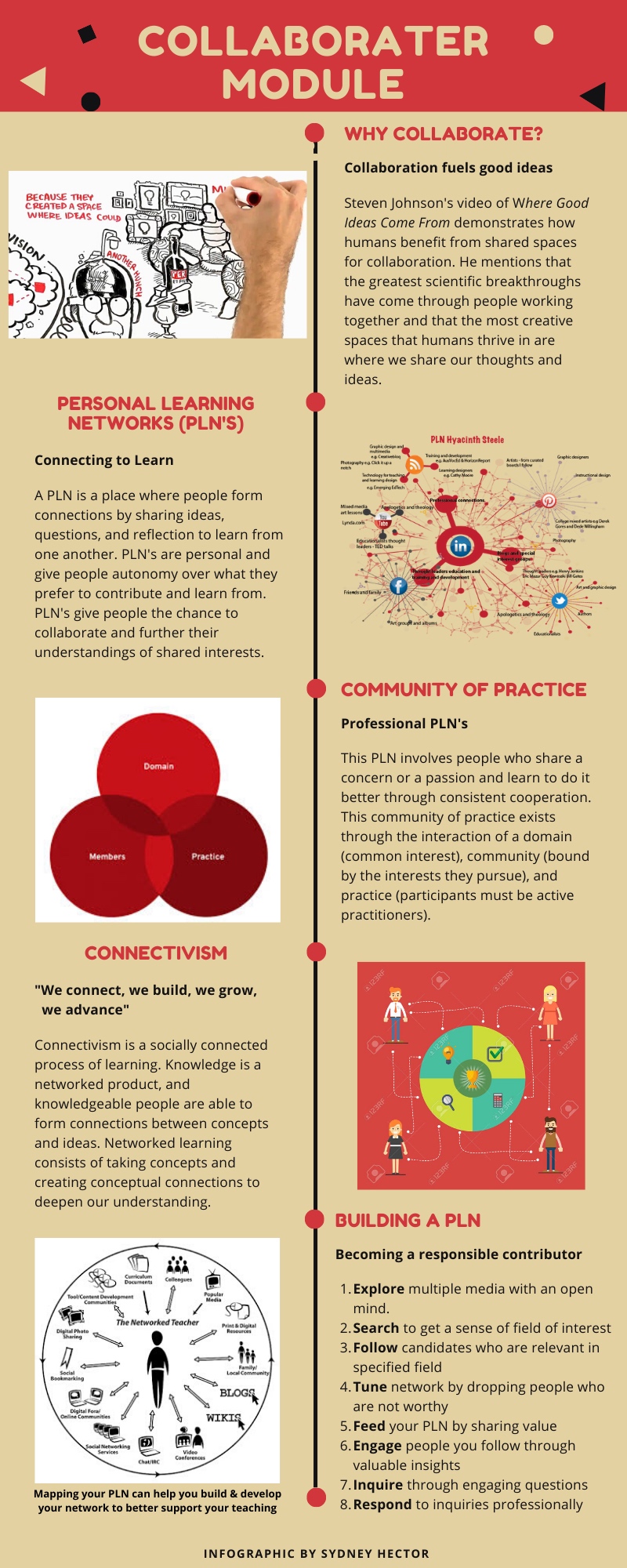
The collaborator module synthesizes the benefits of collaboration and makes connections within the context of education. The module checklist includes learning about the benefits of collaboration, signing up for and exploring twitter, engaging with people who share similar professional interests, listing some activities to engage with a personal learning network (PLN), blogging about expanding your PLN, and mapping your own PLN.
In my experience as a student and teacher, using the collaborator module’s masterclass has helped my self-efficacy, competence, emotional stability, and motivation. Throughout this blog post, I will endeavour to connect this module to my own life.
The first question that the module answered was “why collaborate?”. Steven Johnson’s powerful sketchnote gave some insights into the benefits of connecting with people professionally. Personally, I have seen the positive impacts of collaboration in some of my seminar courses during undergrad. One course I took was called “Issues in Physical Education”, where one person each class lead a seminar and opened the discussion for people in the class to express their opinions and reflect on different possible solutions. This class helped me connect professionally with people who face the same issues in their careers, and helped me connect emotionally as well. Sometimes I feel alone in my profession, partly because I am outnumbered by students, and I forget there are other teachers facing similar difficulties. This class helped me connect and learn from my classmates in a professional manner.
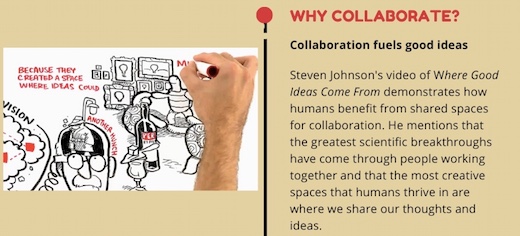
The next section the module discussed was the scope of a PLN and how it can help you professionally. It built on the previous section by explaining how PLN’s can be beneficial, especially virtually, because people from all over the world can contribute their ideas instead of just in person face to face, which can be extremely limiting. In my experience as a soccer coach, I was introduced to a PLN for the first time this year. I work at the largest soccer academy in the world, and they have configured a virtual PLN where certified coaches from around the world share their coaching lessons. I have benefitted immensely from this as I am never at a loss for an idea, and people are always willing to help, share, and reflect on each others lesson plans. Perhaps the reason for this academy doing so well is because of its PLN.
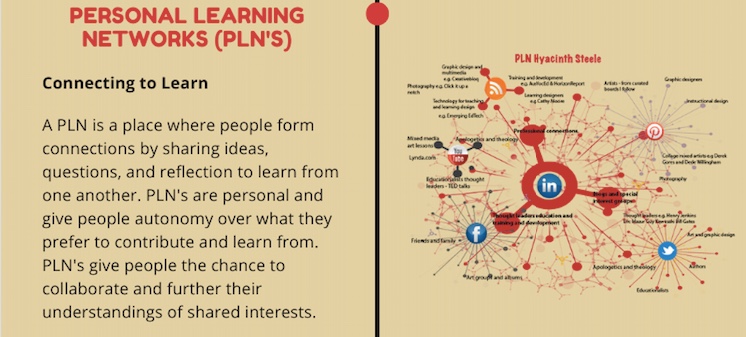
I decided to focus the next part of the infographic on the specific type of PLN, a “community of practice” because this is the best way to grow and advance as a professional. This PLN only involves people who are active professionals within the area of interest. This ensures that no outside perspectives are being thrown in by people who have no expertise in the field. If we were to relate this to my experience at the soccer academy, I wouldn’t feel comfortable adopting a lesson from a parent or kid. These people don’t have the necessary training, qualifications, or expertise to make valuable contributions to the PLN.
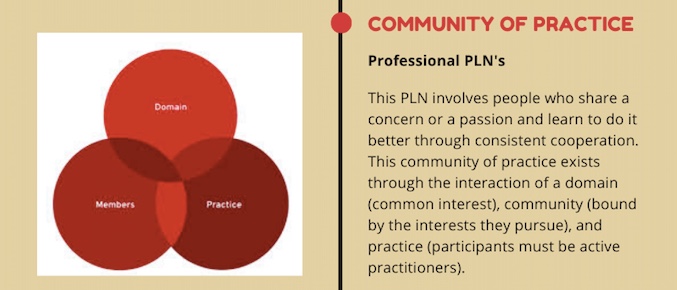
The module discussed the theory of connectivism in learning and teaching – that giving students the ability to connect, share, and discuss helps them learn and gives them autonomy. It is important that learners know they are never alone, and that humans work best learning as part of a community. I think that this is important, however, there must be some direction in their learning – meaning finding people who are certified and have expertise rather than only people with a shared interest. I believe that students should be able to find a PLN where they can participate but also be exposed to active practitioners. Twitter is a great way to do this, by following active practitioners in the student’s field of interest and engaging thoughtfully and politely with the community.
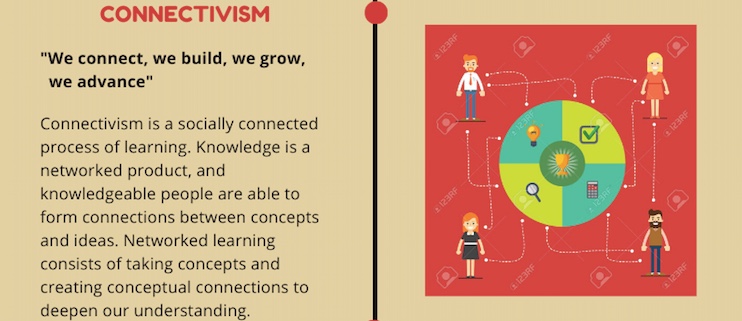
The last section of the module discusses how to build your own PLN through Howard Rheingold’s framework. He maintains that this framework will help one become a responsible contributor to a PLN. By following the steps listed below, one can become an active member of a PLN and help themselves and their community grow. Personally, I have not refined any of my PLN’s yet, rather I have joined them unknowingly and serendipitously. For example, on Facebook, I have followed a few people who continuously post Physical Education games and workshops on their pages, and often times I use these ideas. I have yet to contribute something of my own to a PLN, but I believe this course is preparing me well.
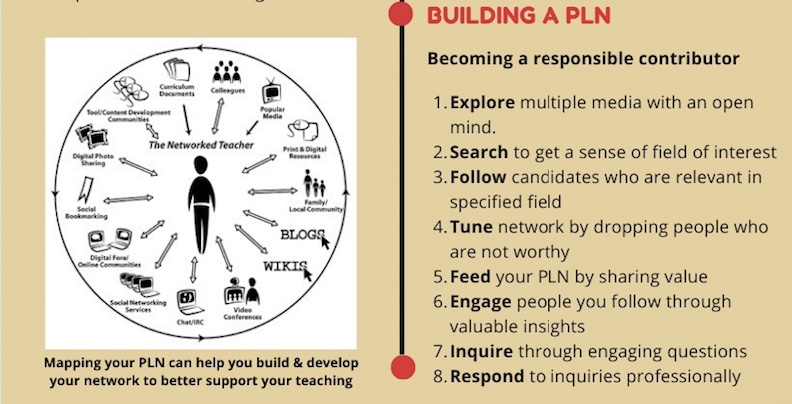
This infographic coupled with my real-life experiences hopefully gives you a comprehensive outlook on why collaborating as an educator is a positive step forward.
By: Sydney Hector
